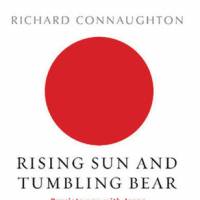Richard Connaughton's "Rising Sun and Tumbling Bear" is a detailed study of the Russo-Japanese War of 1904-05, the first war where an Asian power defeated a European power since the Mongol invasion of the 13th century.
Rising Sun and Tumbling Bear, by Richard Connaughton
384 pages.
Cassell, Nonfiction.
The humiliation of one of Europe's oldest superpowers was a game-changer, rebalancing international relationships in a way that still influences politics in the area. The war, short as it was, can be seen as a major turning point in the geopolitics of East Asia and a milestone on the road to the events of the 1930s and 1940s.
Connaughton is a military historian with an eye on the wider ramifications of armed conflict and "Rising Sun and Tumbling Bear" — loaded with statistics, official accounts and private correspondence from both sides — reflects that dual interest. His rich prose and dramatic flair vividly bring to life the harrowing experiences of men at war.
The story begins in 1860 and ends in 1918, with the last chapter tracing the ripples of 1904-05 through to World War II. Connaughton reveals the Russo-Japanese War as a foretaste of the horrors of the 20th-century warfare, with its machine guns, mines, trenches and barbed wire.
Although the confidence and swagger the Imperial Army and Navy took from their victory would lead them to disaster, this moment — when the world acknowledged Japan as a serious power — is a remarkable story, expertly told by Connaughton.
Read archived reviews of Japanese classics at jtimes.jp/essential.



















With your current subscription plan you can comment on stories. However, before writing your first comment, please create a display name in the Profile section of your subscriber account page.